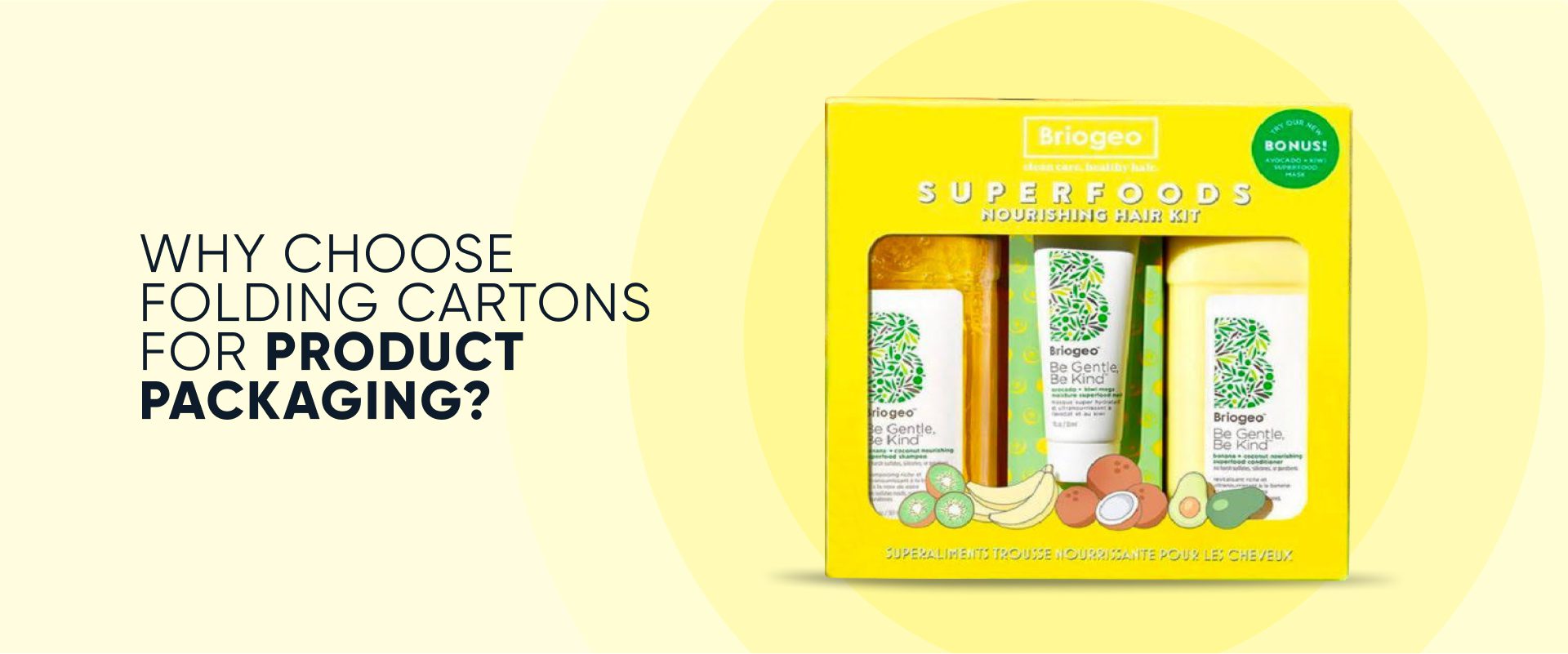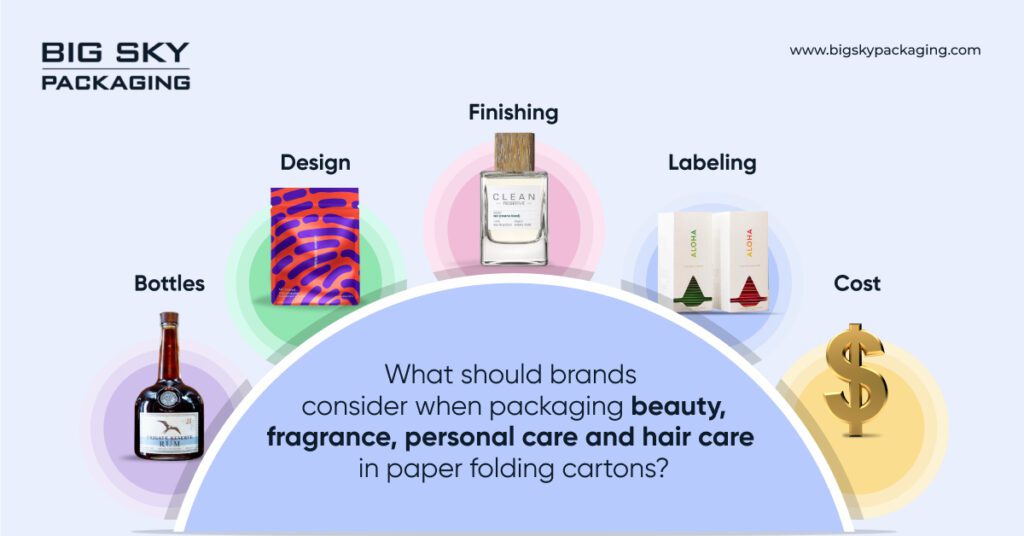The moment a parcel gets delivered, it’s the packaging that exerts an influence on consumers. Sure, it’s the first glance a consumer has of your brand, a creative presentation of what’s inside, and a silent salesman that can either attract or repel. In the age of globalized markets and relentless e-commerce, the packaging isn’t just a wrapper; it’s a strategic marketing tool!
Packaging engineers and manufacturers, the developers of these magical creations, stand at the crossroads of art and science. They don’t just design rigid boxes; they craft experiences. These unsung artisans meticulously select materials, mastermind structural designs, and dance with regulations, all while conjuring an enchanting blend of form and function. With their expertise, a seemingly ordinary carton transforms into a masterpiece of visual delight, eco-friendliness, and structural integrity.
In this guide, we unveil the secrets behind creating captivating rigid boxes that not only impress consumers but also reduce waste, all while elevating your brand’s presence in the market.
Join us on a journey into the world of rigid box packaging.
Understanding Rigid Boxes
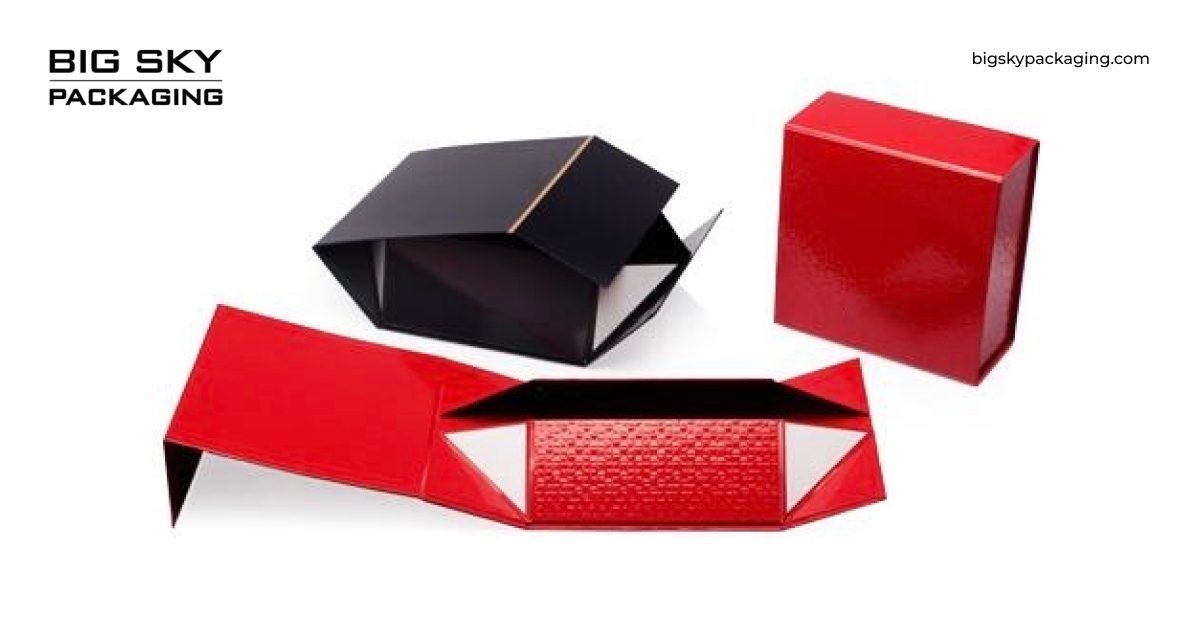
Rigid boxes are versatile containers, crafted from paperboard or paper-based materials, that have evolved to become a staple in the modern packaging landscape, offering a wide range of options to suit diverse product needs.
At their core, rigid boxes are flat sheets of paperboard cleverly engineered to fold into the precise structural enclosures required for a variety of products. They typically feature four flaps, which meet at the center, ensuring a secure and functional design. This simplicity, coupled with their adaptability, makes them a favored choice for packaging everything from cosmetics and hair care to fragrances, wines, and men’s grooming.
The diversity of rigid boxes is striking. Various types cater to specific requirements, including straight tuck-end boxes, reverse tuck-end boxes, and auto-lock bottom boxes. Windowed cartons provide a tantalizing peek at the product inside, while gable top cartons with their unique handles add an extra layer of convenience.
One of the standout advantages of rigid boxes is their lightweight nature, which minimizes transportation costs. Their printable surfaces also make them a canvas for eye-catching designs, essential for branding and marketing. Furthermore, their flat, space-saving design aids in storage and eases logistical concerns.
In the world of packaging, rigid boxes represent a harmonious fusion of form, function, and flexibility. Their unassuming appearance belies their profound impact on consumer experiences and the logistics of modern businesses.

Importance of Rigid Box Box Packaging: How It Benefits Consumers
Rigid box packaging is a dynamic and versatile solution that extends its benefits not only to businesses but also to consumers. While it’s true that this type of packaging aids companies in branding, logistics, and sustainability, it also significantly enhances the consumer experience. Here’s how rigid box packaging directly benefits consumers:
Visual Appeal: Rigid boxes often serve as the first point of contact between a consumer and a product. Their aesthetically pleasing designs, vibrant colors, and intricate graphics enhance the overall visual appeal of products. This makes shopping a more delightful and engaging experience, leaving a memorable impression on consumers.
Product Protection: Consumers expect their purchased items to arrive in perfect condition. Folding carton boxes or rigid boxes are designed to provide superior protection, preventing damage during transport and storage. This reliability ensures that the product inside is received in pristine condition, leading to increased consumer satisfaction.
Easy Handling: Many rigid boxes are equipped with user-friendly features, such as easy-open tabs, handles, and windows. These elements enhance convenience and ease of handling for consumers, making it simpler to access and interact with the product.
Information and Branding: Rigid boxes serve as an effective canvas for brand messaging and product information. Consumers can quickly access essential details about the product, such as usage instructions, nutritional information, and branding. This transparency aids informed decision-making.
Eco-Friendly Appeal: With the growing emphasis on sustainability, rigid box packaging made from recyclable materials resonates with environmentally conscious consumers. It reflects a brand’s commitment to reducing its environmental footprint, attracting consumers who prioritize eco-friendly options.
Compact Storage: Rigid boxes are designed to be space-efficient, ensuring they don’t take up unnecessary room in the consumer’s home. This feature aligns with modern lifestyles characterized by smaller living spaces and encourages consumers to choose products that won’t clutter their environment.
Reusable and Recyclable: Most of rigid boxes are not just recyclable but also appropriate for reuse. This aligns with the passion of consumers to reduce waste and make choices that are best for the environment.
In essence, rigid box packaging enhances the overall consumer experience by combining aesthetics, convenience, and environmental responsibility. It plays a pivotal role in influencing purchasing decisions, ensuring product quality, and enriching the overall journey of consumers from the moment they encounter the product on the shelf to the time they unbox and use it.
How Does Rigid Box Packaging Benefit Businesses?

Rigid box packaging is a strategic asset for businesses, offering a multitude of advantages that significantly impact the bottom line. Here are some key ways in which rigid box packaging benefits businesses:
Brand Enhancement: Folding carton boxes are a canvas for branding. They enable businesses to convey their identity, values, and product messaging effectively, helping to distinguish their products from competitors on the shelf.
Cost Efficiency: These boxes are lightweight and space-efficient, reducing transportation costs. Their flat design optimizes storage and minimizes warehousing expenses, contributing to cost savings throughout the supply chain.
Versatility: Rigid boxes can be customized to fit a wide range of products, from cosmetics and pharmaceuticals to food and electronics. Their adaptability makes them a versatile solution for various industries.
Sustainability: In an era of growing environmental consciousness, sustainable packaging is a need. Folding carton boxes can be created from recyclable and eco-friendly materials, aligning with business commitments to reduce their environmental footprint and plead to eco-conscious buyers.
Consumer Engagement: The visually appealing designs of rigid boxes captivate consumers, influencing purchasing decisions. The packaging serves as a silent marketing tool, piquing curiosity and driving brand recognition.
Product Protection: Ensuring products reach consumers undamaged is paramount. Rigid boxes provide a protective barrier that safeguards products during shipping and storage, reducing the risk of returns and damage claims.
Customization: The structural pattern of rigid boxes can be tailored to the unique needs of various products. Packaging engineers can develop tailored solutions that offer an optimal fit and improved protection.
Regulatory Compliance: Packaging engineers ensure that rigid boxes adhere to industry regulations, assuring businesses of legal compliance and quality standards.
Supply Chain Optimization: By streamlining supply chain processes and minimizing packaging-related hiccups, businesses can improve efficiency and meet delivery timelines consistently.
Consumer Convenience: Rigid boxes can be designed with features such as easy-open tabs, handles, and windows, enhancing consumer convenience and creating a positive unboxing experience.
In summary, rigid box packaging is a multifaceted tool that elevates a business’s brand, reduces costs, supports sustainability, and influences consumer behavior. It’s not merely a protective shell; it’s a strategic asset that contributes to overall success and growth in a competitive marketplace.
Materials and Sustainability
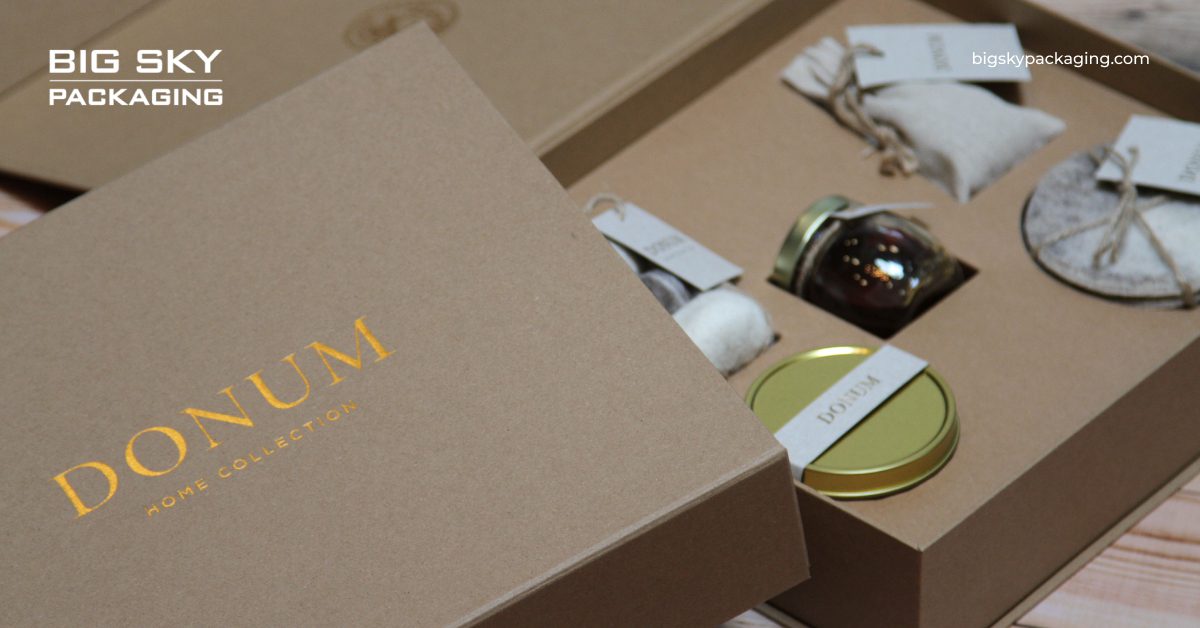
When it comes to rigid box packaging, the choice of materials is a critical consideration that intersects with the paramount issue of sustainability. Modern businesses are not just seeking cost-effective and visually appealing packaging solutions; they are increasingly mindful of their environmental footprint. Here’s a look at the materials and sustainability factors that shape the world of rigid box packaging.
Rigid boxes are primarily crafted from paperboard or paper-based materials. All such materials are not only cost-efficient and lightweight but also innately eco-friendly. The use of paperboard in packaging lowers the environmental impact, as it is often made from renewable resources and is positively recyclable.
Sustainability in carton packaging extends to the inks, coatings, and adhesives used in the printing and finishing processes. Water-based and soy-based inks, along with low-VOC (volatile organic compound) coatings, are popular choices, reducing harmful emissions and environmental harm.
The benefits of utilizing sustainable resources grow beyond environmental advantages. They also align with customer preferences, as more buyers opt for products with eco-friendly packaging. Businesses that prioritize sustainable rigid boxes not only lessen their carbon footprint but also demand a growing market element that values reliable consumption.
In this era of intensified environmental awareness, the selection of materials in rigid box packaging is more than a design reflection; it’s a statement of a brand’s dedication to the planet and a strategy for drawing eco-conscious consumers. As sustainability continues to shape customer choices, rigid boxes offer an excellent avenue to marry functionality and environmental responsibility.
Key Considerations for Perfect Paper Rigid Box Packaging

When packaging beauty, fragrance, personal care, and hair care products in paper rigid boxes, brands should consider various crucial factors to ensure their products stand out and remain protected:
Material Selection: Carefully choose the appropriate material for the packaging. It should not only be durable but also provide protection against external elements that could harm the product. Additionally, prioritize materials with excellent barrier properties to maintain product quality for an extended period. Whenever possible, opt for environmentally friendly, recyclable, and reusable packaging materials to align with sustainability goals.
Design Aesthetics: The design of the paper rigid box plays a significant role in attracting customers. It should enhance the visual appeal of the product and offer convenience in terms of usage and storage. A well-crafted design can create a strong shelf presence and cater to the target audience’s preferences and expectations.
Finishing Touches: Finishing is critical to showcase the quality and uniqueness of the product. Consider combining eye-catching features like vibrant colors, sparkling elements, and special effects that complement the product’s branding and statement. Utilize specialty finishing techniques like embossing, debossing, varnishing, and foil stamping to make the packaging stand out from others and create a memorable impression.
Labeling and Security: Labels should be easily attachable to the paper rigid box. Based on the essence of the product, you can select either tamper-proof or tamper-resistant labels to undertake the virtue of the product. This is especially significant for products those protection and authenticity are prominent.
Cost-Efficiency: It’s crucial to perform a thorough cost analysis by comparing various suppliers. Determine the most cost-effective paper rigid box that goes with the brand’s specific necessities. In some cases, major cost savings can be achieved by capsulizing multiple packaging components into one production unit. This procedure can improve efficiency and cost-effectiveness with time.
By carefully evaluating these factors, brands can build attractive, durable, and cost-effective paper rigid box packaging for their beauty, fragrance, personal care, and hair care products, ultimately enhancing their product’s market presence and customer delight.
Selecting the Right Packaging Partner for Rigid Box Packaging
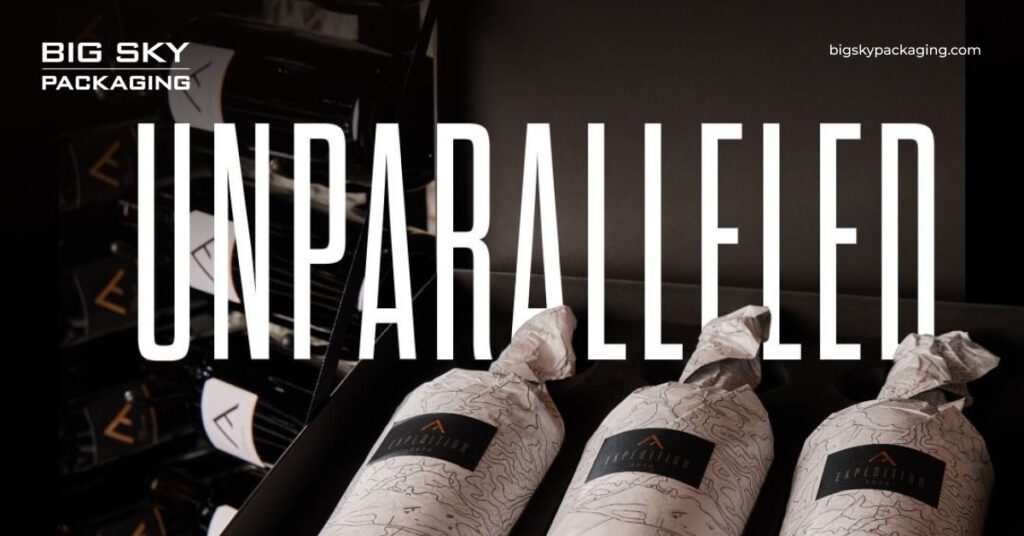
Choosing the ideal packaging partner for your rigid box needs is a pivotal decision that can profoundly influence your brand’s success. To make the right choice, consider the following key factors:
Expertise and Experience: Seek a partner with a solid track record in designing rigid boxes. Their experience across various industries and product types is invaluable.
Design and Innovation: Assess their creativity and design capabilities. The right partner should breathe life into your brand through captivating packaging and be at the forefront of packaging innovations.
Material Knowledge: Ensure the partner has an in-depth understanding of packaging materials, especially if you have specific material or sustainability requirements.
Regulatory Compliance: Your partner should be well-versed in industry regulations and quality standards, ensuring your packaging meets all necessary legal requirements.
Cost Efficiency: Look for a partner who can optimize costs without compromising quality, offering solutions that align with your budget.
Sustainability Commitment: If sustainability is a priority, inquire about their eco-friendly initiatives and practices, ensuring they align with your brand’s values.
Communication & Teamwork: Effective communication and collaboration are critical. The right partner is the one who is responsive, open to feedback, and willing to work closely with your team.
Reputation and References: Research their industry reputation and ask for reviews from their prior clients to count their performance and customer satisfaction.
Sample Work: Ask for the portfolio to see how they have worked on their previous projects and ask for samples of their past work to assess their capabilities firsthand.
Long-Term Partnership: Evaluate the potential for a long-term partnership, as your packaging requirements may grow. A partner who comprehends your brand and can adapt with you is invaluable.
Selecting the right packaging partner is a strategic investment that can significantly impact your brand’s image, product quality, and market success. By carefully evaluating these criteria, you can make an informed choice that will serve as a cornerstone of your packaging success.
We Can Help You With Exquisite Rigid Box Packaging
Embark on a journey through the world of exceptional packaging innovation with BIG SKY PACKAGING. Our team of seasoned packaging artisans is dedicated to infusing unparalleled artistry into every rigid box we meticulously craft.
Whether you seek to elevate your existing packaging or unveil a captivating new design, our experts assure a seamless convergence of aesthetics, practicality, and affordability. As pioneers in the industry, we uphold steadfast commitments to sustainability and environmental stewardship, fashioning rigid boxes that not only elevate your products but also amplify the very essence of your brand.

Let’s Craft Rigid Box Packaging that Takes Your Brand to New Heights!


